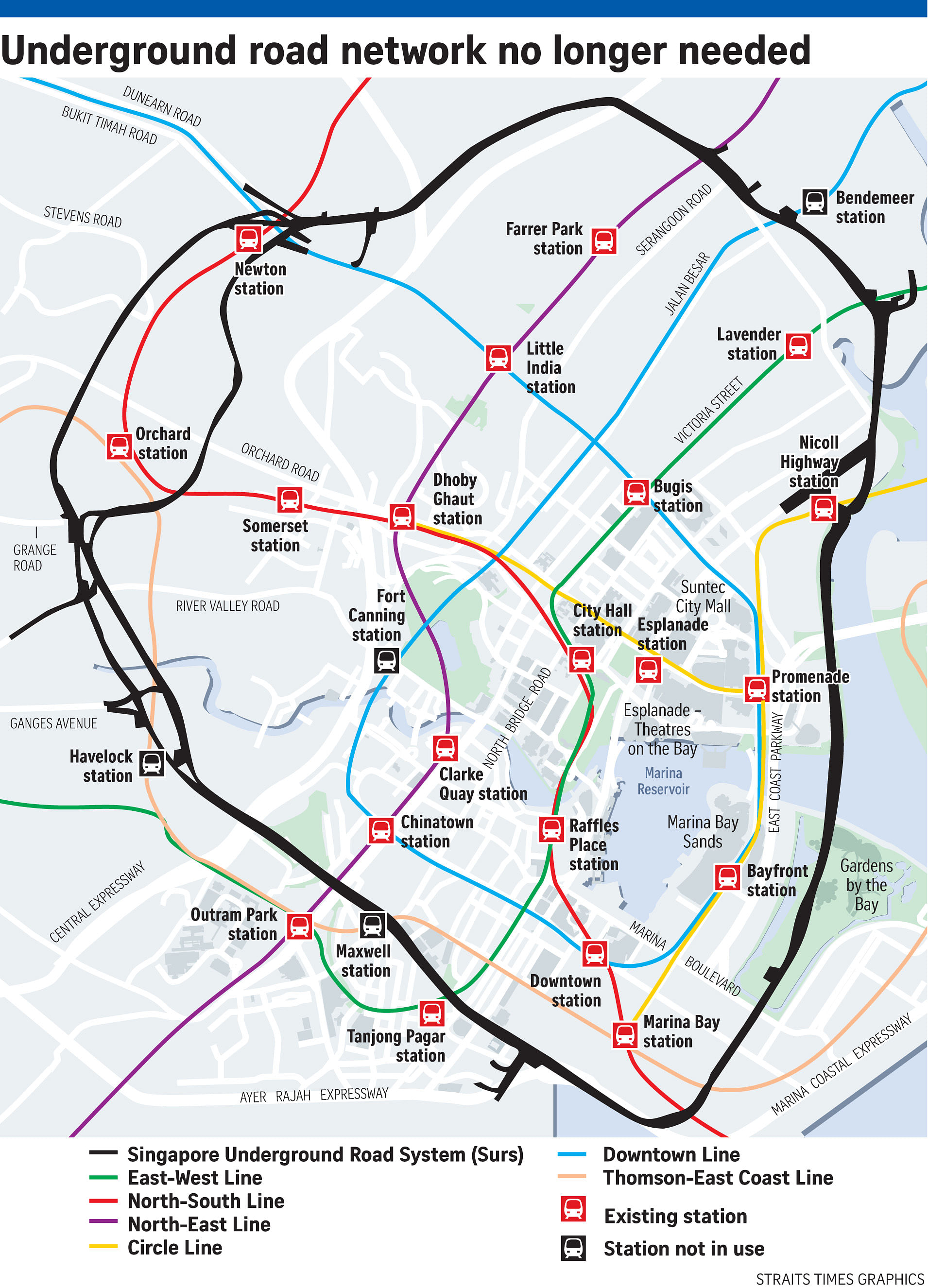For the past 24 years, swathes of land in prime locations like Marina Bay, Orchard and Havelock have been subject to certain restrictions.
For instance, structures built by developers could not exceed a certain weight. They also had to be able to withstand vibration from traffic if underground roads were built beneath them. Now, those curbs have been removed.
The scrapping of plans for a 30km underground road network will give master planners a freer hand in developing the land above and under ground for other uses, said property industry players.
Suntec Real Estate Consultants' director of research and consultancy Colin Tan said yesterday: "What today's announcement means is that it gives our planners greater flexibility and more room to plan for our future space needs."
The Singapore Underground Road System (Surs) was conceptualised in the 1980s as an underground road system around the city fringe. In 1993, land along the Surs alignment was safeguarded - meaning it was subject to stringent rules for development.
Just three years ago, the Land Transport Authority (LTA) said that Surs could also serve the Marina Bay area and the new southern waterfront city from Keppel Channel to Pasir Panjang Terminal.
The idea was that traffic could then go underground, leaving surface land for other uses. But this has been overtaken by developments such as Singapore's car-lite push.
The LTA said yesterday that 295 properties, of which 257 are privately owned, sit on the previously reserved land. Now, they can potentially be redeveloped - and possibly with higher plot ratios. But it did not reveal the total size involved.
Analysts said it is thus difficult to estimate the exact impact of this move. But in general, said OrangeTee research manager Wong Xian Yang, it means there is potential for more land plots to be "freed up and launched for sale" by the authorities.
Real estate agency Chris International director Chris Koh said private developers are likely to bid aggressively for any land that will be released for development in future, though it depends on the authorities' plans for the use of the land.
Based on existing plans, plots may include locations in Balestier, Bendemeer, Newton, Orchard, Havelock, Outram and Marina Bay.
"There's always been a perception that most prime land has been taken up, so this is a good move. Developers and buyers would be willing to pay a premium for the land," said Mr Koh.
But Mr Tan warned that it is too soon for any developer or building owner to think of this as "a windfall". "It will still be up to the Urban Redevelopment Authority's master planners to look at the (newly freed-up) land and decide whether to give it a higher plot ratio, so it is not time yet for land owners to rejoice."
There will also be more leeway for developers to dig deeper such as for basement works, said real estate consultancy ZACD Group's executive director Nicholas Mak.


